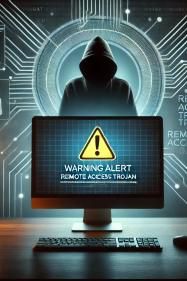The AIDS Trojan, also known as the AIDS Information Diskette Trojan, is widely recognized as one of the earliest examples of ransomware. Its appearance in 1989 shocked the nascent world of cybersecurity, leaving behind lessons that are still relevant today.
The History of the AIDS Trojan
The AIDS Trojan was created by Joseph Popp, a biologist, and was distributed via floppy disks labeled “AIDS Information – Introductory Diskettes.” Over 20,000 copies were mailed to attendees of a conference on AIDS, seemingly under the guise of educational material. However, the diskette harbored a sinister payload: ransomware.
Upon loading the diskette on a PC, the program would remain dormant until the system was booted 90 times. Then, it encrypted the filenames on the hard drive, making the system unusable. To regain access, users were instructed to send $189 to a P.O. box in Panama—marking one of the first known ransomware extortion attempts.
Impact and Lessons for Modern Cybersecurity
Though primitive by today’s standards, the AIDS Trojan ransomware introduced the core tactics that modern cybercriminals still employ: encrypting data and demanding a ransom for its release. Despite its technical limitations, the Trojan revealed early on the vulnerabilities inherent in digital systems, highlighting the need for better cybersecurity awareness.
Key Lessons from the AIDS Trojan
Human Manipulation: The AIDS Trojan preyed on trust, leveraging social engineering by posing as helpful software. Today’s cybersecurity relies heavily on awareness training to combat such tactics.
Importance of Backups: The Trojan highlighted the need for regular data backups. This lesson remains vital as modern ransomware continues to target essential data.
Proactive Defense: The incident showed that relying solely on post-attack measures was insufficient. Proactive cybersecurity strategies, including updated antivirus software and awareness training, are crucial.
The AIDS Trojan may have been an early chapter in malware history, but its lessons echo in today’s digital landscape, reminding us of the importance of vigilance and cybersecurity education.

